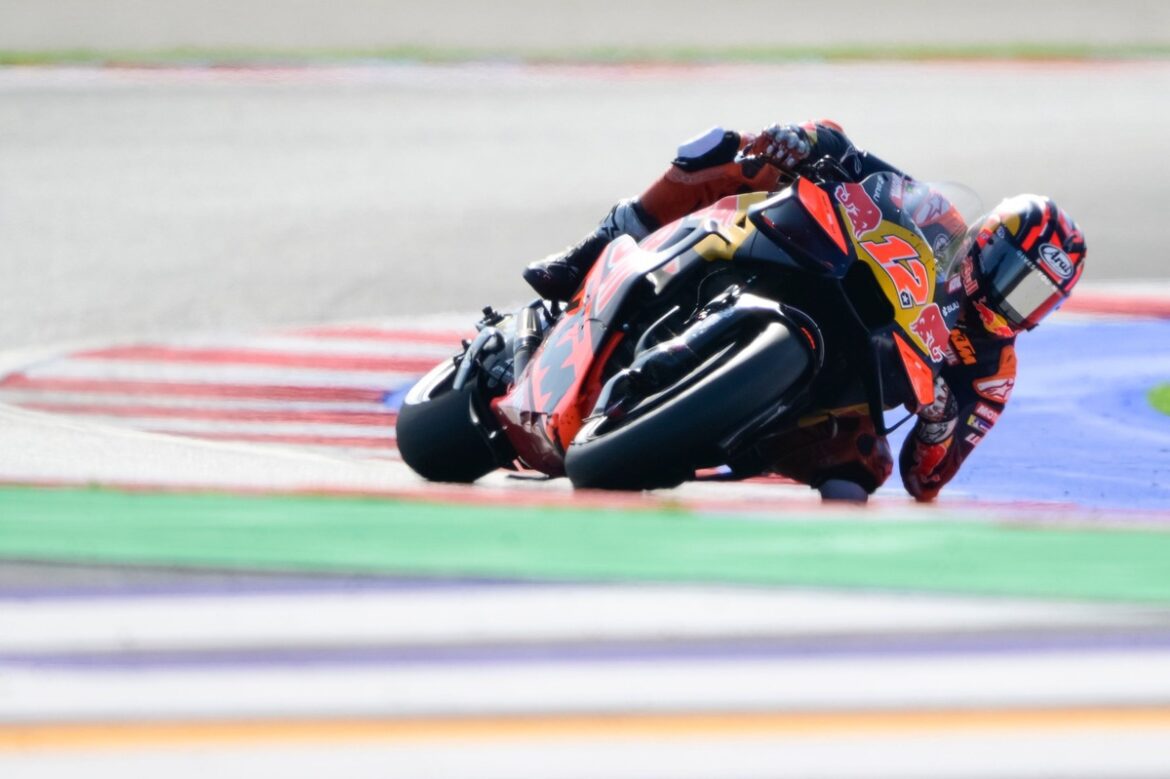Maverick Vinales’ Journey Back to Competitive Racing in MotoGP
Maverick Vinales, the talented rider for Tech3 KTM, is navigating a challenging phase in his MotoGP career as he recuperates from a shoulder injury sustained during the German Grand Prix in July. This unfortunate setback has kept him off the track for a significant period, leading to both physical and emotional hurdles that he is now striving to overcome.
The Injury and Its Impact on Performance
Following his crash, Vinales was forced to miss the Czech Grand Prix entirely. He made a brave attempt to return to racing after the summer break at the Austrian Grand Prix, but his practice runs revealed that he was not yet ready to compete at the level required. Recognizing that his health was paramount, he opted to skip the Hungarian GP the following week.
His long-awaited comeback took place at the recent Grand Prix in Barcelona. However, the results were not what he had hoped for. Vinales qualified in 22nd position and managed to finish the race in 13th, which was a sobering experience for the seasoned racer.
The Road to Recovery: Struggles and Progress
At the Misano circuit, Vinales showed slight improvement, qualifying 16th. Despite this progress, he faced challenges during the sprint race, finishing in 15th place. This experience has been a stark reminder of the ongoing limitations he faces as he continues to recover from his injury.
Vinales candidly expressed his feelings about his current state: “It’s hard to accept that I’m more of a passenger than a driver on the bike, but it is what it is.” His acknowledgment of the situation reveals the mental and emotional toll that injuries can take on athletes, especially those competing at such high levels.
Navigating Challenges on the Track
Vinales has pinpointed certain sectors of the track where he feels particularly disadvantaged. For instance, he mentioned that Sector 3, which has historically been one of his strongest areas at Misano, has become a source of frustration. “This year I’m not able to hold on to the bike; I’m not able to ride fast,” he lamented. This inability to perform at his usual pace is compounded by the fact that he is losing valuable time every lap, which accumulates significantly by the end of the race.
Pain vs. Strength: The True Struggle
One of the critical aspects of Vinales’ recovery is the distinction between pain and strength. While he acknowledges that pain varies from day to day, he insists that it is not the primary obstacle to his performance. “My problem is that I have no strength,” he explained. This insight highlights a common misconception about injuries; pain management is often seen as the primary concern, but for Vinales, building physical strength is the key to regaining his competitive edge.
Even the use of painkillers does not provide a solution to his strength issues. “You can take painkillers, but it’s not like you take painkillers and your strength is multiplied by 1000,” he remarked. This perspective sheds light on the complexities athletes face when recovering from injuries and the multifaceted nature of rehabilitation.
The Importance of Muscle Recovery
Building muscle is not just about enhancing performance; it is also integral to alleviating pain. Vinales understands that once he regains strength and muscle mass, the pain he experiences will significantly diminish. “I know when the muscle comes, then the pain is going to go away,” he stated with a sense of hope. His current struggle involves compensating with his joints and ligaments due to a lack of muscle, which only exacerbates his discomfort.
The journey to recovery is often long and challenging, especially for professional athletes. Vinales’ experience serves as a reminder of the dedication required to return to peak performance levels.
The Bigger Picture: KTM’s Progress and Personal Challenges
Vinales’ injury not only affects him personally but also impacts his team, KTM, which has been experiencing a resurgence in recent races. His teammate, Enea Bastianini, recently achieved a podium finish in Barcelona, demonstrating the potential of the KTM bikes. Unfortunately, Vinales finds himself on the sidelines during this exciting time for the team, unable to capitalize on the momentum generated by his colleagues.
The contrast between Vinales’ struggles and his teammate’s successes can be particularly difficult to navigate emotionally. While he supports his team and celebrates their achievements, the frustration of not being able to contribute as he would like is palpable.
Looking Ahead: The Future for Maverick Vinales
As Vinales continues to work on his recovery, he remains focused on regaining his strength and competitiveness. His commitment to rehabilitation and training is evident, as he understands the importance of returning to form both for himself and his team.
The mental aspect of recovery is just as critical as the physical. Vinales has to maintain a positive mindset and stay motivated during this challenging period. His journey serves as a testament to the resilience and determination that define professional athletes, especially in the face of adversity.
Conclusion: A Journey of Resilience
Maverick Vinales’ path back to competitive racing in MotoGP is one marked by challenges, both physical and emotional. His experiences illustrate the complexities of injury recovery in professional sports and the importance of strength over pain management. As he navigates this difficult period, Vinales remains hopeful and committed to returning to the track stronger than ever, ready to compete and contribute to his team’s success in the future.
